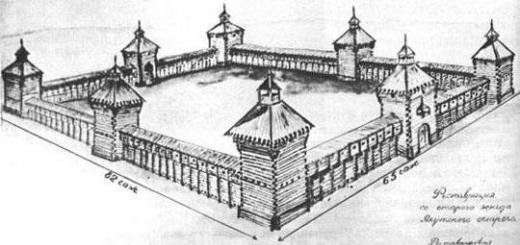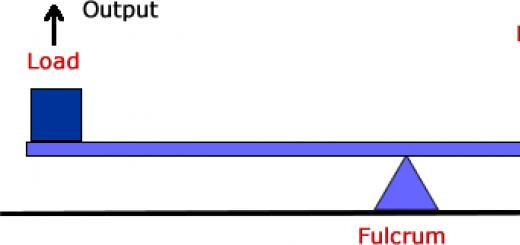The moon can be perceived as a friendly neighbor, who, nevertheless, keeps to himself and does not force himself on friends. We quite like our neighbor, but if he moved, we would have to worry about what might happen in his absence.
When the Earth was very young (30 million years old) and was a clot of molten lava, a giant cosmic body hit the Earth, capturing part of its hot mantle, and ricocheted back into space. This is how the Moon was formed.
A billion years ago, the Moon ceased to be geologically active. But this does not mean that the Earth's satellite does not perform important functions.
1. Tides and ocean height

Perhaps the most obvious sign of the Moon's absence will be changes in tides. If the moon did not influence our oceans, the tides would be three times stronger. The Sun, of course, also influences tidal changes, but it does not have the same powerful force as the Moon. The moon also affects the height of the ocean; The Moon's gravitational pull causes the water to "swell" around the middle of the earth. In other words, there is less water at the poles than at the equator. If there were no moon, the bulge of water would disappear, heading towards the shallower poles.
2. Earth's rotation

Every day, the Moon slows down the Earth's rotation by a tiny amount of time. Dividing "microseconds per year" by 365 days gives you this amount of time. If we didn't have the Moon, which slows down the planet's rotation, we would "spin" to a six-hour day. While this may seem funny, keep in mind that a six-hour day can lead to all sorts of consequences. Firstly, winds and storms would increase. Secondly, it would likely affect the development of life on our planet. Given a few short hours of daylight and darkness, who knows how plants and animals would have developed further.
3. Earth's axis

The Moon also influences the Earth's axis, helping us maintain the graceful tilt of 23 degrees, thanks to which we have a fairly good climate and living conditions. Without the Moon, we would risk leveling out or falling on our side. At an upright position (almost zero tilt) we would see the sun for just a few minutes - like Uranus, with its 97 degree tilt - or we could get 42 years of continuous sunshine, followed by 42 years of darkness.
With the release of the movie Oblivion, many wondered: what would happen if Earth's Moon was destroyed? “I don’t know,” many answered themselves. - “What will happen when the Moon is destroyed?” Let's not guess whether the chicken crossed the road or not, but just try to answer this question.
The first thing that comes to the mind of scientists is how will the Moon be destroyed? If, for example, the Death Star is nevertheless built and it randomly breaks the Moon into pieces, they will fly in the same orbit, and therefore have the same gravitational influence on the Earth. There will be few changes. This is not a black hole in the solar system.
Still from the movie "Oblivion". In the background is the moon destroyed by aliens.
Yes, we would no longer see lunar phases at night, but we would see a glittering cloud of debris that would likely be much brighter than the full Moon since there would be more surface area reflecting light. There are even some astronomers who hate this new clutter in the night sky in advance.
But if the Moon were completely stolen (or sold, as Heinlein was), gravity would change significantly. The tide schedule could be thrown away.
Ocean tides will occur, but the water will follow the sun, so you'll probably see big waves all over the place day after day. Some fishermen would appreciate this.
Since tidal forces also affect the Earth's core, there is sure to be some turmoil within. Earthquakes. Several severe volcanic eruptions. Something like that. But California, Japan and Crimea will not go under water.
However, the problem will get worse in the long run. Now the Earth's rotation axis slowly wobbles every 26,000 years, like a top, as it feels the gravitational rope of the Sun. Due to wobble, the North Star does not always point exactly north. Experts agree that the Moon is a kind of shock absorber for this vibration, preventing it from becoming completely loose.
It is quite possible that, left without the Moon, the Earth will wobble wildly, like Mars, for example. The Red Planet's wobble is so extreme that it may be causing its climate to change. If the same thing happens on Earth, the blue planet could become a real monster and slightly lose its position for rainbow habitat.
Without the Moon, the tilt of the Earth's axis could change - from the current 22-25 degrees to an angle of zero to 85 degrees. Zero will eliminate the seasons, and an 85-degree flip will put the Earth on its side. If this happened, the current crisis we call global warming would be a pleasant tea party compared to the potential one.
Fortunately, the loosening of the earth's axis will affect us only after many millions of years.
And if we don’t die of boredom during this time, we will have to silently watch as the disappearance of the Moon destroys our culture and art, animals, music, poetry, photography and so on.
A natural question arises. We will survive if the alien invaders destroy the Moon first. But why do they need this?
If we compressed the lifetime of our planet to 24 hours, then the Moon would appear 10 minutes after the start of the countdown. A satellite is not just a piece of rock. Without it, life on Earth would have looked completely different, and perhaps would never have formed at all.
|
|
|
|
|
|
|
Past
Space accident
It is believed that the Earth formed 4.56 billion years ago and acquired a satellite 30 million years later, after an object the size of Mars crashed into the planet. He knocked out a gigantic piece from the then still semi-liquid planet, which could not overcome the force of gravity and remained in Earth's orbit. Initially, the Moon was at a distance of 20,000–30,000 km from the planet - 20 times closer than it is now.
Neighborly

The moon not only decorates the night sky and excites lovers. Despite the considerable distance (it takes cosmonauts three days to reach the satellite), the Moon influences the Earth more than any other celestial body. The pattern of mountains and plains, the fauna of the oceans and even the length of the day - without the Moon, everything on our planet would be different.
Illustrations: Andrey Dorokhin, Alamy/Legion-Media
For almost a full 4.5 billion years of our solar system's history, the Earth was alone and orbiting the Sun. Our giant lunar companion is larger and much more massive than any other moons compared to the planets they orbit. In its full phase, the Moon shines brightly at night, and throughout its history it has been associated with phenomena such as madness (or sleepwalking), animal behavior (howling at the Moon), agriculture (the full moon before the autumnal equinox) and even women's menstrual cycles . Its destruction would be catastrophic, but it would also change our world forever in some incredibly interesting ways.
1) When the Moon is destroyed, its fragments will fly towards the Earth, but this may not lead to the destruction of life. Imagine a weapon so deadly that it would be able to gravitationally release the moon and tear it apart. This will require a piece of antimatter the size of an average asteroid (about a kilometer in diameter), and then its parts will scatter in all directions. If the explosion is weak enough, the fragments will form one or more moons; and if he is strong, then there will be nothing left at all; and if it is of the right strength, it will create a ring system around the Earth. Over time, these lunar fragments will be knocked out of orbit by the Earth's atmosphere and a series of collisions will occur.
However, these impacts will not be as destructive as in the case of asteroids or comets, which we fear so much today. While chunks of the Moon may be massive, dense, and perhaps even larger than the dinosaur-killing asteroids, they will still have much less energy. Asteroids or comets colliding with the Earth will move at speeds of 20, 50 or even more than 100 kilometers per second, while lunar fragments will move at a speed of only 8 kilometers per second, and they will only enter our atmosphere tangentially. However, pieces of the Moon falling to Earth will have destructive force, but this force during a collision will be only 1% of the total energy in a collision with an asteroid of comparable size. And if the falling pieces are small enough, then humanity will easily survive their impact.
2) The night sky will naturally be much brighter. Once the Moon and all its remnants disappear, the second brightest object in the Earth's sky will completely cease to exist. While the Sun is naturally 400,000 times brighter than the full Moon at perigee, it is in turn 14,000 times brighter than the next brightest object in the sky, Venus. If you take the Bortle Dark-Sky Scale, a full Moon can take you from number 1 - the clearest and most natural dark sky of all possible options - right up to level 7 or 8, eclipsing even the brightest stars. Without the Moon, there will be no interference with clear, dark skies on any day of the year.
3) There will be no more eclipses. Whether we are talking about a solar eclipse - partial, total or annular - or about lunar eclipses, when this natural satellite of the Earth falls into our shadow, in any case there will be no more eclipses. An eclipse requires the presence of three objects and their specific alignment - the Sun, a planet and the moon of that planet. When the moon passes between the Sun and a planet, a shadow may be cast on the surface of the planet (total eclipse), the moon may cross the surface of the sun (an annular eclipse), or it may block out only part of the sun's light (partial eclipse). However, if there is no moon at all, then nothing like this happens. Our natural satellite will never be able to fall into the Earth's shadow if it does not exist, and thus eclipses will be done away with.
4) The length of the day will become constant. You may not have given it much thought, but the Moon provides a negligible frictional force to the rotating Earth, and as a result, its rotation speed gradually decreases. We may lose just a second here or there over many centuries, but they add up over time. Our modern 24-hour day had only 22 hours during the time of the dinosaurs and only 10 hours several billion years ago. And in four million years, we won't be adding any more days to our calendar because the rotation rate will slow down and the length of the day will continue to increase. However, without the Moon all this will stop. We will have a 24-hour day every day until the sun runs out of energy and goes out.
5) Our ebbs and flows will be insignificant. The tides present interesting, significant differences for those of us who live close to the coast, especially in a bay, narrow inlet, channel or other area where water accumulates. The tides on Earth are mainly due to the influence of the Moon, while the Sun has only a minor effect on the tides we see today. During the full moon and new moon, when the Sun, Earth and Moon line up in a certain line, we experience the highest spring tide - this is the time of the largest possible difference between the level of high tide and low tide. When they are at right angles to each other during the quarter moon, we have the lowest water level - and this is the moment of least change. The spring tide is twice its lowest level, but without the Moon the tides will be very small and only a quarter of the current maximum level.
6) Our axial tilt will be unstable. This is an unpleasant thing. The Earth rotates on its axis at an inclination of 23.4 degrees relative to our orbital plane around the Sun (this phenomenon is called obliquity or obliquity). You might think that this has little to do with the Moon, but over tens of thousands of years this tilt varies - from 22.1 degrees to 24.5 degrees. The moon represents a stabilizing force, while worlds without large moons - like Mars - eventually experience tilt changes tens of times greater. On Earth, if there is no Moon, our deviation, according to existing estimates, will at times exceed 45 degrees, and this will make us a world that will spin on our sides. The poles will always be cold, but the equator will not necessarily be warm. Without the Moon to stabilize us, an ice age will spread across different parts of our world every few thousand years.
And finally:
7) We will no longer have a convenient launch pad to fly to the rest of the universe. As far as can be judged, humanity is the only species that has willingly entered the surface of other worlds. Part of what was done between 1969 and 1972 can be explained by the fact that the Moon is so close to the Earth. The distance is only 380 thousand kilometers, and the rocket can cover this path in about three days, and a flight to the Moon and back at the speed of light will take only 2.5 seconds. As for the next closest objects - Mars and Venus - the flight to them will last several months, the round trip will take more than a year, and the communication signal will travel this distance for a large number of minutes.
Going to the Moon is the easiest "training trip" we could ask of the Universe if our goal were to explore the rest of the Solar System. Perhaps someday we will use it again, as well as all that it gives to the Earth - and this is not such a distant time.
Ethan Siegel - astrophysicist and writer,
he is also the founder and primary writer of the blog Starts With a Bang.
Let's imagine for a moment that the Earth would not have a natural satellite. What would change? First of all, this, of course, would affect the beauty of our earthly landscapes: transparent moonlit evenings, silvery paths on the water would disappear... But this is only a purely external side. There would be no lunar ebbs and flows, and therefore, navigation conditions would change. True, solar tides would remain, but due to the enormous distance to the Sun, they are much weaker than lunar tides.
On the other hand, the absence of lunar nights would greatly facilitate many astronomical observations. It can be assumed that under these conditions, scientists, in particular, would discover more comets and small planets of the solar system.
It is very possible that the disappearance of the Moon would have a certain impact on the course of some geophysical processes.
But there is another side to the matter, perhaps not so obvious. It is worth recalling that the sphericity of the Earth was proven by the shape of the Earth's shadow on the Moon during lunar eclipses.
That during telescopic observations of the Moon, Galileo discovered mountains on its surface and thereby made the first real breach in the age-old ideas about the impassable border between the earthly and the heavenly.
That Newton, as a result of studying the motion of the Moon around the Earth, finally formulated the law of universal gravitation.
That the observation of the movement of the Moon around the Earth served as one of the first impetuses that led to the idea of creating artificial satellites of our planet...
It is also worth noting that with the disappearance of the Moon, solar eclipses would cease.
However, the role of the Moon is by no means limited to its influence on the development of scientific theory. Recently, the Moon, as the celestial body closest to us, is increasingly becoming a kind of testing ground with the help of which many complex operations related to the study and exploration of space are practiced and verified.
Thus, the Moon was the first space “radio mirror”, with the help of which astronomical radar methods were developed. Experiments with the reflection of radio waves from the lunar surface helped to develop equipment capable of locating the Sun and many planets of the solar system.
The Moon also plays a very important role in the development of space flights. We are talking not only about the possibility of creating a space station on the lunar surface in the future, but also about the fact that many spacecraft movement operations are being practiced in the lunar area, which are very significant when flying to other planets.
Thus, our night star is by no means just a “decorative decoration” in the earth’s firmament. Its absence could, to a certain extent, hamper the development of science and human exploration of outer space.
In the absence of the Moon, a phenomenon called precession will weaken significantly. As you know, our Earth, due to its daily rotation, has a somewhat flattened shape - its polar radius is approximately 21 km shorter than the equatorial one. Thus, due to rotation, the Earth’s matter is redistributed - some of it is, as it were, shifted from the poles to the equator, forming a kind of equatorial protrusion. The effect of lunar gravity on this protrusion (as well as the attraction of the Sun and planets) leads to the fact that the axis of rotation of our planet describes a cone in space over approximately 26 thousand years and precesses. The angle at the apex of the cone is about 47 degrees. Therefore, the current Polaris has not always been polar and will not always remain so. For example, after 13 thousand years, the bright star Vega from the constellation Lyra will show our descendants the way to the north.
Although the mass of the Moon is small in comparison with the masses of the planets and the Sun, we should not forget that the Moon is located closest to the Earth. But the force of gravity weakens very quickly with distance - in proportion to its square. If there were no Moon, although precession would have been preserved, the angle at the apex of the cone, which the earth’s axis describes, would have become much smaller.
Causing precession, the Moon, due to some features of its movement, introduces into it some periodic deviations, called nutation and having a 19-year period. With the disappearance of the Moon, nutation would completely disappear.
 Random climate
Random climate Possibility of life
Possibility of life Dark nights
Dark nights No eclipses
No eclipses Super fast year
Super fast year Harsh climate
Harsh climate Calm water
Calm water









